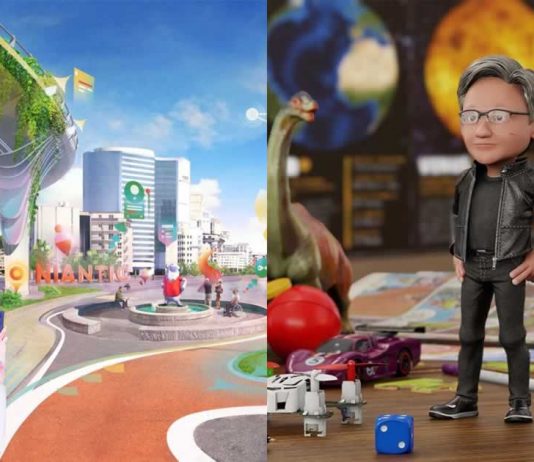Metaverse has been making a lot of noise — every industry is jumping into this new innovation after Meta, Facebook parent company triggered the technology. First, it was Microsoft who announced its entry to metaverse after Meta, and now it looks like video game companies are also following the same path.
Nvidia and Niantic are the new fighters who have just been added to the ring. The companies have announced their intentions to create a metaverse, though with different approaches.
When it comes to Nvidia, they have chosen the name “Omniverse” to represent its metaverse. The idea is practically the same — replicate the real world in a virtual space, but with Omniverse, Nvidia is proposing a more concise approach than that presented by Meta or Microsoft.
The Nvidia platform is not simply an idea with concepts to develop but a set of tools that will promote, among other things, the creation of technologies for voice recognition, facial scanning and the animation of virtual avatars. Some of those have names like Omniverse Avatar and others will be based on the omniverse platform already established by Nvidia.
Niantic, the company behind the successful mobile game Pokémon Go, has launched its own development kit — Lightship — an augmented reality application development platform to build a metaverse. Lightship has been in development since 2018 under the name Niantic Real World Platform. However, earlier this year, when the term “metaverse” was starting to ring around, the company renamed its platform to Lightship and began working to further enhance its capabilities to go beyond gaming.
Starting this week, developers will be able to access the Niantic Dev Kit for free and start building their apps for a “real metaverse.” Niantic says Lightship includes the tools and technologies that power the three main features of augmented reality — mapping, understanding and sharing in real-time.
One of the Lightship’s strengths for the metaverse is Niantic’s depth layer. It automatically adapts to the camera of any Android or iOS device, from standard RGB sensors to the newest devices with LiDAR technology. The result? a dynamic 3D map that allows you to create realistic layers that take location and context into account.
But developers will find many more tools to build applications or games for the metaverse. For now, the focus is on the hardware capabilities of mobile devices, but for next year, Niantic plans to launch a “visual positioning system”, apparently for augmented reality glasses.
Niantic would be working with Qualcomm to develop augmented reality glasses. These could become an important axis in the vision of the real metaverse.


